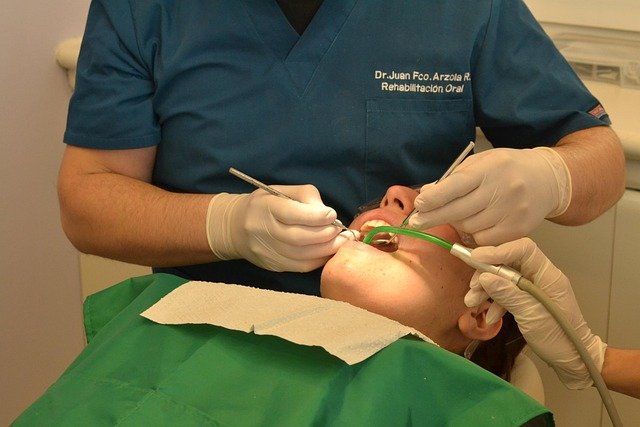A sudden sharp pain while eating or drinking hot or cold foods isn’t something to ignore. When sensitivity or discomfort becomes persistent, it may be an indication of a deeper issue within the tooth.
If a dentist has suggested dental root canal treatment, you may wonder what it involves and if it’s right for you. This guide covers the root canal process, what to expect, and who may need one.

What is a Root Canal?
A root canal is a safe, routine treatment for teeth with deep decay or infection. It means taking out the damaged pulp, which holds nerves and blood vessels.
Then, the space is cleaned and sealed to prevent more problems. This procedure relieves pain, reduces swelling, and saves your natural tooth from extraction.
Signs You Might Need One:
- Sharp or lingering tooth pain
- Sensitivity to hot or cold
- Swollen or tender gums
- Tooth darkening
- A pimple-like bump on the gum
If you see any of these symptoms, visit your dentist right away to avoid problems.
Step by Step: How Does Treatment Work?
Wondering what is dental root canal treatment? Then know that it follows a structured clinical approach that is primarily aimed to eliminate infection, preserve the natural tooth, and restore the full function of teeth. Here is a quick breakdown of the typical treatment process:
- Clinical Examination and Imaging
The dentist starts with a thorough exam. This often includes X-rays to check for pulp damage or infection. They confirm if endodontic therapy is needed.
- Anaesthesia Administration
Local anesthesia numbs the area. This keeps the patient comfortable during the procedure.
- Access Cavity Preparation
An opening is carefully created in the tooth’s crown to gain access to the pulp chamber and root canal system.
- Pulp Tissue Removal
The inflamed or infected pulp tissue is completely removed using specialized endodontic instruments. This step eliminates the source of infection and associated discomfort.
- Cleaning and Shaping of Canals
Root canals get cleaned, disinfected, and shaped. This prepares them for sealing. Irrigation solutions are used to eliminate remaining bacteria and debris.
- Canal Obturation
Once the root canals are cleaned, they are filled with a biocompatible material. It closes off the space and stops any future microbial contamination.
- Temporary Sealing
The access cavity is sealed with a temporary filling if a permanent restoration cannot be placed immediately. This helps protect the tooth until the permanent solution is ready.
- Final Restoration
A final crown is placed in a second visit. This restores the structure, function, and appearance of the tooth.
The treatment could be one or two visits. A lot felt better shortly after that, and the infection pain was very much reduced.
Aidite‘s advanced restorative materials offer superior strength, durability, and aesthetics, making them a reliable choice for long-lasting root canal outcomes.
Dental Pain After Root Canal Treatment
You will feel relaxed knowing that you don’t experience any kind of dental pain after root canal treatment.
Today, root canal therapy is usually painless and very effective with local anesthesia and professional care. There is very minimal pain to the vast majority of patients from the procedure.

You may feel some soreness for a few days after, especially if the tooth is very infected. Over-the-counter pain relievers can help, and discomfort usually fades within a short time.
The relief from pain and infection makes the temporary discomfort worth it after treatment.
How Long Does a Root Canal Take?
A dental root canal treatment usually lasts 60 to 90 minutes for single-canal teeth. Complex cases, such as molars with many canals, may take longer and need more visits.
Your dentist may recommend two visits if the tooth is highly infected. This helps ensure it gets cleaned and sealed well.
The procedure itself is quick, but make sure to follow up with your dentist for checkups. It is to help you to heal correctly.
Dental Root Canal Treatment vs Tooth Extraction
When it comes to a dental root canal procedure, a question that frequently pops up in one’s mind is whether a tooth should be pulled out instead. Here’s a look at both options:
| Feature | Dental Root Canal Treatment | Tooth Extraction |
| Goal | Save the natural tooth | Remove the tooth |
| Procedure | Remove infected pulp, clean and seal the tooth | Surgical removal of the tooth |
| Long-term Solution | Can last for years with proper care and a crown | Requires replacement with implant, bridge, or denture |
| Impact on Bite | Preserves natural bite and prevents teeth shifting | This can lead to bite changes and teeth shifting |
| Cost | $600 – $2,000+ (including crown) | Typically lower upfront costs, but replacement can be higher |
| Number of Visits | Typically 1-2 | 1 (extraction), additional for replacement if chosen |
| Recovery | Mild soreness for a few days | Longer recovery, the potential for more discomfort |
| Preservation | Keeps your natural tooth | Results in loss of natural tooth |
| When Recommended | Infected or severely decayed teeth that can be saved | The tooth is beyond repair |
Is Root Canal Performed Along with Other Treatments?
Yes, root canals typically involve other procedures like crowns, gum treatment, bridgework, and implants. Your dental root canal specialist will first analyze the condition of your tooth and jaw structure and suggest an ideal treatment for you.
- For instance, if your multiple teeth are fractured or even missing, your dental root canal treatment is appended with bridge work to bring equilibrium to your tooth structure.
- Sometimes, before commencing with dental root canal treatment, treating gums, performing a deep cleaning session or gum therapy, and making gums ready for root canal treatment is a necessary process.
- Lastly, if the condition is more critical and the tooth cannot be restored, a dental extraction and replacement will be done.
Cost of Dental Root Canal Treatment in the USA
The dental root canal treatment cost varies. It depends on where you live, the dentist’s experience, and how complex the case is. Single-root canals usually range from $600 to $1,500, while multi-rooted teeth can cost $1,000 to $2,000 or more.

Additional costs may include:
- X-rays: Often required for diagnosis and planning, which can increase the overall dental root canal treatment cost.
- Crown Placement: After a root canal, many patients need a crown. It helps with structure and looks. The cost is usually between $800 and $2,000.
Dental root canal treatment may seem expensive. However, it often offers a better long-term choice than extraction and replacement. Dental insurance often covers part of the cost, and financing may be available.
Crowning the Tooth: What Comes Next
After dental root canal treatment, the next step is often placing a dental crown. The crown has several important roles:
- Protection: A crown covers the tooth, providing strength and preventing cracks or breaks.
- Restoration of Function: It helps you chew and speak easily. You won’t worry about the tooth being weak.
- Aesthetic Improvement: Crowns can be made from porcelain or ceramic. They match your natural teeth color for a seamless look.
This process typically involves two visits. First, the dentist shapes the tooth and takes impressions. Then, they place the final crown. Though it adds to the dental root canal treatment cost, a crown is vital for the root canal’s long-term success.
Conclusion
Dental root canal treatment saves damaged or infected teeth. It does this by removing the pulp and sealing the tooth. Severe pain, swelling, or sensitivity may indicate the need for this procedure.
A treated tooth can last for years. It provides lasting relief and keeps your natural smile. This way, you can skip replacements. Early intervention and regular checkups are crucial for prevention.
FAQs
Do teeth become weak after a root canal?
Yes, teeth can get more brittle after a root canal. It happens because the pulp is removed, and because of this, the tooth stops getting nourishment. That’s the reason why a crown is often recommended to restore strength and prevent fractures.
Can I eat after a root canal treatment?
You must avoid chewing with the treated tooth until the anesthesia wears off itself. Follow your dentist’s advice. Avoid hard or chewy foods for a few days. This will help you heal.
Do you need a filling after a root canal?
Yes, your dentist will seal the access hole with a filling. After that, a permanent crown will be added later. It restores the full function and protects the tooth from damage.
Is a root canal procedure painful?
No, modern root canal procedures use local anesthesia. They are usually just as comfortable as getting a routine filling. Most patients feel relief from pain shortly after treatment.



